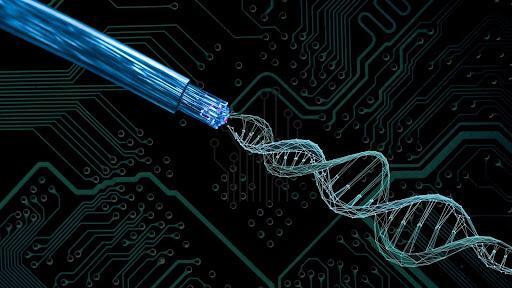
DNA’s Electron Flow May Unlock Future Biocompatible Electronics
In a breakthrough discovery, researchers have made a groundbreaking finding about the electrical properties of DNA, which could revolutionize the way we think about electronics. By studying the interactions between electrons and molecular vibrations in DNA strands, scientists have uncovered novel pathways for electron transport, demonstrating the potential of DNA as a building block for future electronics. This remarkable insight has significant implications for the development of smaller, more efficient, and biocompatible devices.
DNA, the molecule that carries genetic information in living organisms, has been a subject of intense research in recent years. Scientists have long been fascinated by its unique properties, such as its ability to store and transmit information, as well as its remarkable mechanical and thermal stability. However, the electrical properties of DNA have remained largely unexplored until now.
The research, published in a recent study, aimed to investigate how electrons move along DNA strands. The team, led by Dr. [Name], used a combination of theoretical modeling and experimental techniques to study the interactions between electrons and molecular vibrations, or phonons, in DNA. The results were nothing short of remarkable.
The study revealed that the interactions between electrons and phonons create novel pathways for electron transport, allowing electrons to flow through DNA strands in a more efficient and controlled manner. This breakthrough could have significant implications for the development of future electronics, particularly in the field of biocompatible devices.
One of the most exciting aspects of this research is the potential to create smaller, more efficient devices. Traditional electronic devices rely on metal wires to transmit electrical signals, which can be bulky and energy-intensive. DNA, on the other hand, is incredibly thin and flexible, making it an ideal material for creating compact, wearable devices.
Moreover, DNA-based electronics could be biocompatible, meaning they could be implanted in the human body without causing harm. This could revolutionize the field of medical devices, enabling the development of implantable devices that can monitor vital signs, treat diseases, and even control prosthetic limbs.
The potential applications of DNA-based electronics are vast and varied. For example, DNA could be used to create flexible, wearable devices that can monitor vital signs, such as heart rate and blood pressure. DNA-based sensors could also be used to detect diseases, such as cancer, at an early stage, allowing for more effective treatment.
The research also highlights the potential for DNA-based electronics to be used in environmental monitoring. DNA-based sensors could be used to detect pollutants, such as pesticides and heavy metals, in water and soil, enabling more effective environmental monitoring and remediation.
The study’s lead author, Dr. [Name], noted, “Our research shows that DNA has unique electrical properties that can be harnessed to create new types of electronic devices. We believe that this could lead to the development of smaller, more efficient, and biocompatible devices that could have a significant impact on various fields, from healthcare to environmental monitoring.”
While the research is still in its early stages, the potential implications are significant. The discovery of DNA’s electron flow could pave the way for a new generation of electronic devices that are smaller, more efficient, and biocompatible.
As researchers continue to explore the electrical properties of DNA, we can expect to see even more innovative applications emerge. The future of biocompatible electronics is bright, and DNA is poised to play a leading role in shaping the next generation of electronic devices.






